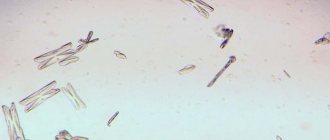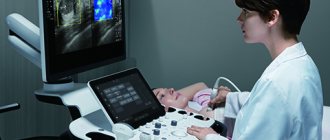Bladder hernia is a relatively common variant of the pathological process. It is a wall protrusion of a hollow organ through the abdominal wall, groin area, etc. Accompanied by prolapse of the bladder, a decrease in the rate of urine removal, and disruption of the entire excretory system.
According to statistical estimates, the pathological process is more common among representatives of the stronger sex due to the peculiarities of anatomy and physiology. In women, a common cause is artificial resolution of pregnancy, multiple births, and the gestational process in general.
It is extremely rare that a hernia of the bladder is the primary pathological process. Much more often we are talking about a secondary pathology caused by other diseases. The cause may also be a congenital anatomical defect, but less commonly.
There are no symptoms at all in the early stages, or they resemble those of chronic cystitis. It makes sense to immediately contact a urologist for a thorough diagnosis.
Treatment is surgical in all cases; there is no point in using medications alone.
Causes
Development factors will be different for men and women. Accordingly, the issue needs to be considered in terms of gender.
In representatives of the stronger sex, typical causes of bladder hernia include the following:
- Excessive physical activity. Conditionally applicable only to men, since it is they who mainly do physical labor. Loaders, builders, general workers, athletes involved in weightlifting and others are especially at risk. Otherwise, the reason also applies to women, but to a lesser extent.
- BPH. The modern name of the disease is benign prostatic hyperplasia. Accompanied by urinary retention, which leads to degenerative processes in the bladder and indirectly weakens the muscle corset that supports the organ in the same anatomical position. The risk of developing a bladder hernia in men in this case varies from 3 to 17%, according to various estimates. The more advanced the process, the larger the tissue proliferation, the higher the probability.
For representatives of the fairer sex, specific causes are mainly related to the course of pregnancy and childbirth.
- Multiple pregnancy. They talk about it when two or more children develop in the womb at the same time. Stretching of the muscles of the peritoneum and the muscles that support the bladder in a stable position are provoked.
- Another possible option is artificial resolution of pregnancy through cesarean section. Improper suturing of the muscles leads to their relaxation, which increases the likelihood or even makes the development of a bladder hernia inevitable. The question is complex. It all depends on the qualifications of the surgeon.
There is also a large group of reasons that do not depend on gender. Among them:
- Hormonal imbalance. Women are more predisposed to it. Mainly, again, during pregnancy and before childbirth, also after them, during the recovery period.
- Congenital diseases. Including those caused by chromosomal mutations. But spontaneous anatomical defects are found much more often. They have nothing to do with mutations, so usually everything is limited to problems with the bladder.
- Genetic predisposition to the problem. According to research, there is a possibility of developing a bladder hernia if there is a similar problem in the ascending line. It makes sense to undergo regular preventive examinations under the supervision of a urologist to reduce the likelihood of a negative scenario.
- Obesity. It provokes a hernia relatively rarely.
- Rapid weight loss. This reason, on the contrary, leads to a sharp change in body configuration, decreased muscle tone, and degenerative processes. Therefore, the likelihood of developing a pathological process is much higher.
- Gynecological operations, operations for the removal of tumors of the digestive system with resection of lymph nodes, parts of organs, other surgical interventions for gastroenterological and oncological problems.
- Constipation. They provoke an increase in intra-abdominal pressure when the patient strains. With a long course of such a pathology, the risks of a hernia are significantly higher.
According to practitioners and theorists, it is mainly the stronger sex who suffer. This is due to anatomical features and lifestyle.
Lifestyle also indirectly affects muscle tone. Lack of physical activity, senile changes in the body, current somatic diseases, they lead to weakening of muscles. The abdominal muscles and those adjacent to them become flabby and weak. The bladder acquires abnormal mobility, which ends in a hernia.
Classification of inguinal hernias
The disease can be congenital or acquired. The first option occurs in children and requires planned treatment. Therefore, in adults, in the vast majority of cases, acquired inguinal hernias are detected. The main classification followed by domestic surgeons divides hernias into various types, depending on the characteristics of their structure. It includes the following items:
- Direct inguinal hernia. It exits the abdominal cavity through the internal fossa of the inguinal canal. The hernial sac is represented by the transverse fascia, which prevents the contents from descending into the scrotum. The defect is usually localized in the upper part of the scrotum and is a round formation, often bilateral. Direct inguinal hernia is usually detected in older people.
- Indirect inguinal hernia. Its gate is located in the lateral fossa of the inguinal canal, while the hernia itself is not located straight, but obliquely. The contents in most cases end up in the scrotum. In this case, an indirect inguinal hernia is often accompanied by hydrocele of the testicle or spermatic cord.
- Combined inguinal hernia. They consist of two or three separate hernial sacs that do not communicate with each other and are represented by an oblique or direct hernia in various combinations. Usually in such cases, concomitant changes in the iliac and inguinal zones are noted.
In addition, hernias are divided into primary, recurrent and postoperative, reducible and unreducible, complicated and uncomplicated.
Symptoms
The clinical picture in the early stages of bladder hernia in women and men is invisible and almost does not make itself felt. This latent course can persist for years, until the protrusion becomes too voluminous. Typical signs, common to both sexes, are represented by symptoms reminiscent of those of cystitis.
- Pain syndrome in the groin area. Also the lower abdomen, perineum, external genitalia. Intensity ranges from barely noticeable to excruciating. The nature of the discomfort is squeezing, pressing, shooting. It gets worse when visiting the toilet and immediately after urinating. As the disease progresses, the symptom intensifies.
- Discomfort when emptying the bladder. Feeling of pressure in the groin, foreign body, distension.
- Frequent false urge to visit the toilet. The so-called pollakiuria. There is a reflex reaction, a response to irritation of the walls of the bladder, and an inflammatory process may occur. During the process, urine does not come out at all or is released drop by drop, which excludes organic or functional kidney diseases.
- Change in urine color. To a darker one. Blood may be present.
- With palpation, you can feel a lump in the abdominal cavity, in the groin, it is movable. This is a hernia. In more complex cases, deep palpation is required for palpation and physical assessment.
The clinical picture also depends on gender. In men, the signs described above are supplemented by others:
- Erectile disfunction. Accompanied by a decrease in the quality of potency or its complete absence. The phenomenon is temporary and is associated with insufficient quality of blood flow.
- Decreased quality of seminal fluid. As a result, infertility is possible.
- Severe pain in the urethra. A tendency to genitourinary infections develops. Primarily to urethritis.
For representatives of the fairer sex, the symptoms are somewhat different:
- Menstrual irregularities. By type of delay. It is necessary to exclude pregnancy, infectious and hormonal diseases.
- Problems with libido, sexual desire.
The typical clinical picture develops relatively late. When the pathological process reaches an advanced stage, the likelihood of complications is high. Such patients have to be urgently hospitalized to decide on the advisability of surgical treatment and intervention methods.
Risk group
As practice shows, the likelihood of tumors appearing in the genitourinary system increases in men:
- Those who abuse tobacco products. According to statistics, kidney cancer is diagnosed in smokers 2 times more often.
- Middle aged (after 45 years). This is due to a decrease in the level of male sex hormones along with an increase in female ones.
- People who work in hazardous industries (for example, when a person often comes into contact with hazardous chemicals).
- Those who have been on dialysis for a long time. This often leads to kidney cancer.
Diagnostics
It is carried out on an outpatient basis or in a hospital, depending on the situation. In any case, you need to act as quickly as possible. Specialist - urologist, surgeon. It is necessary to answer two questions: what pathological process is taking place, what method can be used to influence it. Diagnostics are used to answer both.
Sample list of studies:
- Oral questioning of the patient. Identification of complaints, drawing up a complete clinical picture. Allows you to determine hypotheses regarding the cause and nature of the disease. Because it is necessary to differentiate between a hernia of the bladder and hernias of other organs, cancerous and benign tumors.
- Next, a medical history is required. To understand what could have caused the pathological process.
- Physical examination. Palpation. Gives an answer to the question about the probable origin of the disease.
- Ultrasound examination of the bladder area. Used for primary tissue imaging. Does not always provide comprehensive information. Allows you to see the situation in general. But the detail is insufficient. Additional methods are required.
- To better understand where and how the anatomical disorder is localized, MRI is used. This is a method that allows you to see the organ in detail with all its features. If a tumor is suspected, a contrast agent is administered intravenously. At the same time, MRI is actively used in the preoperative period to plan therapy.
The next question remains about the nature of the treatment provided. To plan it, it is possible to conduct visualization activities several times.
Treatment
Therapy is strictly surgical. Other methods don't make much sense. Doctors strive to reduce the likelihood of dangerous complications, at the same time trying not to force events and not to operate on a patient without sufficient grounds. They approach the choice of treatment tactics with caution. Therefore, specialists in surgery and urology often choose a wait-and-see approach, if the situation allows. It consists of regularly monitoring the dynamics of the process. If the hernia does not provoke dangerous complications and there is no such likelihood, continue observation.
As soon as the situation changes, surgical intervention is required. It consists of influencing the muscles, muscle corset and/or resection of the bladder, its partial excision.
Afterwards comes the rehabilitation period. At least two years of medical supervision is required. As soon as postoperative wounds have healed sufficiently, physical therapy is required. Its function is to normalize the tone of the muscles of the pelvis, pelvic floor, and abdominal muscles. Without this, there is a high probability of the dangerous scenario repeating itself.
Recovery time ranges from 6 to 14 months. During the entire period, it is also recommended to adhere to a diet and avoid sudden changes in body weight in both directions.
Rehabilitation period
The duration of the recovery period after treatment of a hernia ranges from 3 to 10 days, which depends on the volume of the operation and the method of its implementation. With local anesthesia and removal of a small hernia, a person can go home a couple of hours after the operation. After general anesthesia, the patient can be released after 2 days; with laparotomy, the duration of inpatient treatment can be up to 10 days.
All patients, regardless of the type of operation, are prescribed a gentle diet with the exception of fatty, salty, spicy, fried foods and painkillers as needed. Physical activity must be avoided for at least 1 month. The sutures after surgery are removed on days 6–8. In the postoperative period, it is recommended to wear a bandage to relieve stress. Full restoration of functionality may take up to 5 months.
An inguinal hernia is not one of those diseases whose treatment can be shelved. Its progression, increase in size, in the absence of treatment, will ultimately lead to its infringement, and it is unlikely that it will be possible to get by with a small incision in the groin area. In addition, this complication is fraught with intestinal dysfunction and gangrene of loops that fall into the hernial sac. In this case, the dead areas will have to be removed.
Book a consultation 24 hours a day
+7+7+78
Prevention
Specific preventive measures include following simple recommendations:
- Correction of body weight. But without sudden changes. Therefore, no aggressive diets or other extreme methods of losing weight. All the more efficient ones.
- Optimal level of physical activity. Physical inactivity and excessive physical activity are almost equally harmful.
- Timely contacting doctors regarding third-party diseases. Including prostate adenomas.
- Careful monitoring of your well-being during pregnancy. It makes sense to regularly visit a leading obstetrician-gynecologist and report any problems to him. If necessary, consultation with an endocrinologist is indicated.
- An important point is muscle training. Perhaps doing some light sports, if your health allows. Or physical therapy, if there are contraindications to more intense activity.
If you follow the recommendations presented, there is every chance of not encountering a hernia, even if there is a tendency to develop one.









